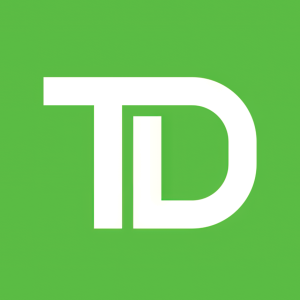[FWP] Toronto Dominion Bank Free Writing Prospectus
Rhea-AI Filing Summary
The Free Writing Prospectus outlines the terms of Autocallable Market-Linked Step Up Notes to be issued by The Toronto-Dominion Bank (TD) and linked to the Russell 2000 Index (RTY). Each note has a $10 principal and a tenor of approximately five years. The notes pay no coupons and are not listed on any exchange.
Automatic call feature: On each of the four annual Observation Dates the notes will be redeemed if RTY closes at, or above, its Starting Value. The projected Call Amounts range from $10.85–$10.95 in year 1 (≈8.5-9.5% premium) up to $13.40–$13.80 in year 4 (≈34-38% premium). Early redemption caps further upside potential.
Payout at maturity (if not called):
- If RTY is flat or up to +45% versus the Starting Value, investors receive the principal plus a fixed $4.50 Step-Up Payment (45% total return).
- If RTY is above +45%, investors participate 1-for-1 in all further gains.
- If RTY is below the Starting Value, repayment declines point-for-point with the index; the Threshold Value equals 100%, so any decline erodes principal, down to total loss at a -100% move.
Key risks called out in the term sheet include: full downside exposure below the Starting Value, limited upside if called, TD credit risk, a secondary-market price expected to be below the public offering price, and exposure to small-cap volatility inherent in RTY.
Investors should review the linked Preliminary Offering Documents and risk disclosures before purchasing the notes.
Positive
- 45% fixed ‘Step-Up’ return if the Russell 2000 is flat or modestly higher at maturity provides an above-market payoff versus holding the index.
- Escalating call premiums of up to ≈38% allow investors to realize attractive gains in as little as one year if the index performs.
- Unlimited upside participation above a +45% move offers potential for higher returns relative to capped structured notes.
Negative
- No downside buffer: any decline in RTY below the Starting Value erodes principal on a 1-for-1 basis, up to total loss.
- Automatic call limits upside beyond scheduled premiums, transferring favorable scenarios back to the issuer.
- Credit risk of TD; repayment depends on TD’s ability to meet obligations.
- No secondary-market liquidity or exchange listing, likely resulting in sizable bid-ask spreads and price concessions.
- Initial estimated value below offer price means investors pay an upfront premium over fair value.
Insights
TL;DR: Attractive 45% fixed upside but 100% downside begins immediately; auto-call feature likely limits participation in large rallies.
Valuation & Structure: A 45% Step-Up on flat performance is generous versus typical five-year autocallables, but the 100% threshold means investors assume full equity risk from day one. Annual call premiums (≈8.5–9.5%, 17–19%, 25.5–28.5%, 34–38%) imply TD expects modest index performance and seeks to cap its liability via early calls.
Risk/Reward: Reward is front-loaded; if RTY drifts sideways the investor wins, yet probability-weighted downside is significant given small-cap volatility. The note’s initial estimated value is below issue price, indicating an imbedded placement fee and hedging costs. Absence of coupons and illiquidity further reduce attractiveness.
Investor Fit: Suitable only for investors with a bullish-to-neutral view on RTY who can tolerate credit and market risk, and who prefer defined, albeit capped, payouts over direct equity exposure.
TL;DR: Product shifts equity risk to investors while adding TD credit exposure and liquidity constraints—overall risk profile is high.
The 1:1 downside, absence of principal protection, and 100% threshold create equity-like risk without dividends. TD’s senior unsecured rating mitigates credit risk somewhat, yet spread widening could hit secondary pricing. The call feature favors the issuer: early redemption occurs precisely when the payout profile is most expensive for TD, truncating long-run upside. Given RTY’s historical 20%+ annualized volatility, probability of ending below the Starting Value is non-trivial. From a portfolio perspective, the notes provide leveraged small-cap exposure with asymmetric payoff, but investors must price in the embedded fees and opportunity costs.









